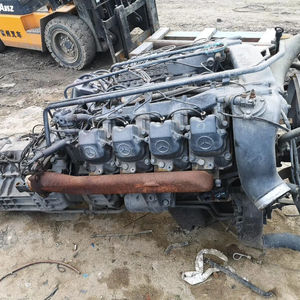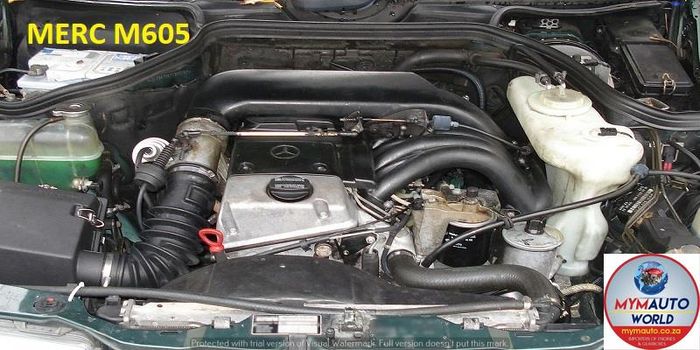Opel Corsa Engine: Efficiency and Reliability for Your Vehicle
Discovering the Inner Operation of a Compact Lorry's Engine System
As motorists, we often take for approved the complex processes that happen within the boundaries of our lorry's engine system. In this exploration of a portable car's engine system, we will certainly untangle the internal operations of this mechanical symphony, dropping light on the secrets that drive us onward on our day-to-day journeys.
Combustion Process Introduction
The burning process in a small car's engine system is an essential mechanism that effectively transforms fuel into energy to power the automobile. This procedure occurs within the combustion chamber of the engine, where fuel and air mix, stir up, and produce controlled surges. The burning process consists of four primary phases: consumption, compression, exhaust, and power.
During the intake stage, the piston relocates downward, attracting in a mix of air and gas into the combustion chamber. This descending movement generates the power needed to drive the car. This cyclic combustion procedure is basic to the operation of a small vehicle's engine system, making sure reliable energy conversion for propulsion.
Piston and Cyndrical Tube Communication

The piston's specific fit within the cyndrical tube is vital for preserving optimal compression and avoiding energy loss during burning. Limited clearances between the piston and cyndrical tube wall surfaces ensure effective sealing, allowing the piston to move smoothly without permitting gases to leak past. Appropriate lubrication is likewise important to minimize friction and use in between these parts, enhancing longevity and performance.
Moreover, the layout and materials utilized in producing the piston and cylinder influence engine efficiency and sturdiness. Modern engines usually employ lightweight yet resilient materials like light weight aluminum alloys for pistons and cylinder linings to decrease inertia and improve thermal performance. On the whole, the unified interaction between the piston and cylinder is fundamental to the engine's performance and overall efficiency.
Gas Injection System Capability
Fuel shot systems in small vehicle engines play an essential function in exactly delivering gas to the combustion chamber for controlled and reliable ignition. The fuel shot system works by infusing fuel right into the combustion chamber at the optimal minute during the engine's procedure (opel corsa engine). This exact timing ensures that the gas mixes equally with the air for correct burning, resulting in boosted fuel effectiveness and reduced exhausts
There are primarily two types of gas injection systems utilized in portable automobile engines: port gas injection (PFI) and straight gas injection (DFI) PFI systems infuse gas into the consumption port prior to the consumption shutoff, while DFI systems inject fuel straight right into the combustion chamber. Both systems have their advantages, with DFI using far better fuel atomization and PFI giving a more economical solution.
Understanding Engine Air Conditioning Devices
Efficient procedure of a compact car's engine depends heavily on the efficiency of its cooling devices. Engine air conditioning is vital to stop getting too hot, which can lead to severe damage and reduced efficiency. The air conditioning system in a compact vehicle commonly contains numerous components functioning with each other to manage the engine temperature level. One critical part is the radiator, which uses coolant to soak up warmth from the engine. As the warm coolant moves through the radiator, it releases heat into the air, cooling down before returning to the engine. The water pump flows the coolant via the engine and radiator, making sure click for more a regular circulation to manage temperature level. Furthermore, the thermostat aids manage the coolant circulation to preserve ideal engine temperature level. Some automobiles additionally have cooling fans that activate when additional air conditioning is needed, such as throughout hefty web traffic or warm weather condition. Comprehending these engine cooling mechanisms is important for preserving the efficiency and longevity of a small lorry's engine system.

Exhaust System Parts Explained
The optimal functioning of a portable lorry's engine cooling devices depends on a corresponding system called the exhaust system, which makes up numerous important elements for making certain effective exhausts and engine efficiency. The exhaust system includes components such as the exhaust manifold, catalytic converter, muffler, and tailpipe. The exhaust manifold accumulates exhaust gases from the engine's cylinders and paths them to the catalytic converter. The catalytic converter after that transforms dangerous pollutants in the exhaust right into less damaging discharges prior to launching them through the muffler and tailpipe.
One essential component of the exhaust system is the oxygen sensor, which monitors the oxygen degrees in the exhaust gases to aid manage gas intake and make certain optimal engine efficiency. opel corsa engine. Additionally, the resonator may exist in some exhaust systems to reduce sound degrees. On the whole, the exhaust system plays an essential duty in keeping engine performance, minimizing harmful discharges, and guaranteeing a quieter driving experience for compact vehicle owners

Final Thought
To conclude, the small vehicle's engine system is an intricate mix of components that collaborate to facilitate the combustion procedure, convert he has a good point gas into power, and eliminate waste gases. Understanding the inner functions of the engine system, consisting of the piston and cylinder communication, gas injection system, engine air conditioning systems, and exhaust system elements, is important for preserving ideal performance and efficiency of the vehicle.
The combustion procedure in a compact car's engine system is a critical system that successfully transforms fuel into power to power the vehicle.Fuel shot systems in portable vehicle engines play a vital role in specifically supplying fuel to the combustion chamber for controlled and efficient ignition.There are mainly 2 kinds of gas shot check out this site systems made use of in portable lorry engines: port gas shot (PFI) and direct fuel shot (DFI) Recognizing these engine air conditioning mechanisms is essential for keeping the performance and long life of a small car's engine system.
The ideal functioning of a compact vehicle's engine cooling mechanisms depends on a complementary system understood as the exhaust system, which comprises numerous essential components for guaranteeing reliable discharges and engine efficiency.